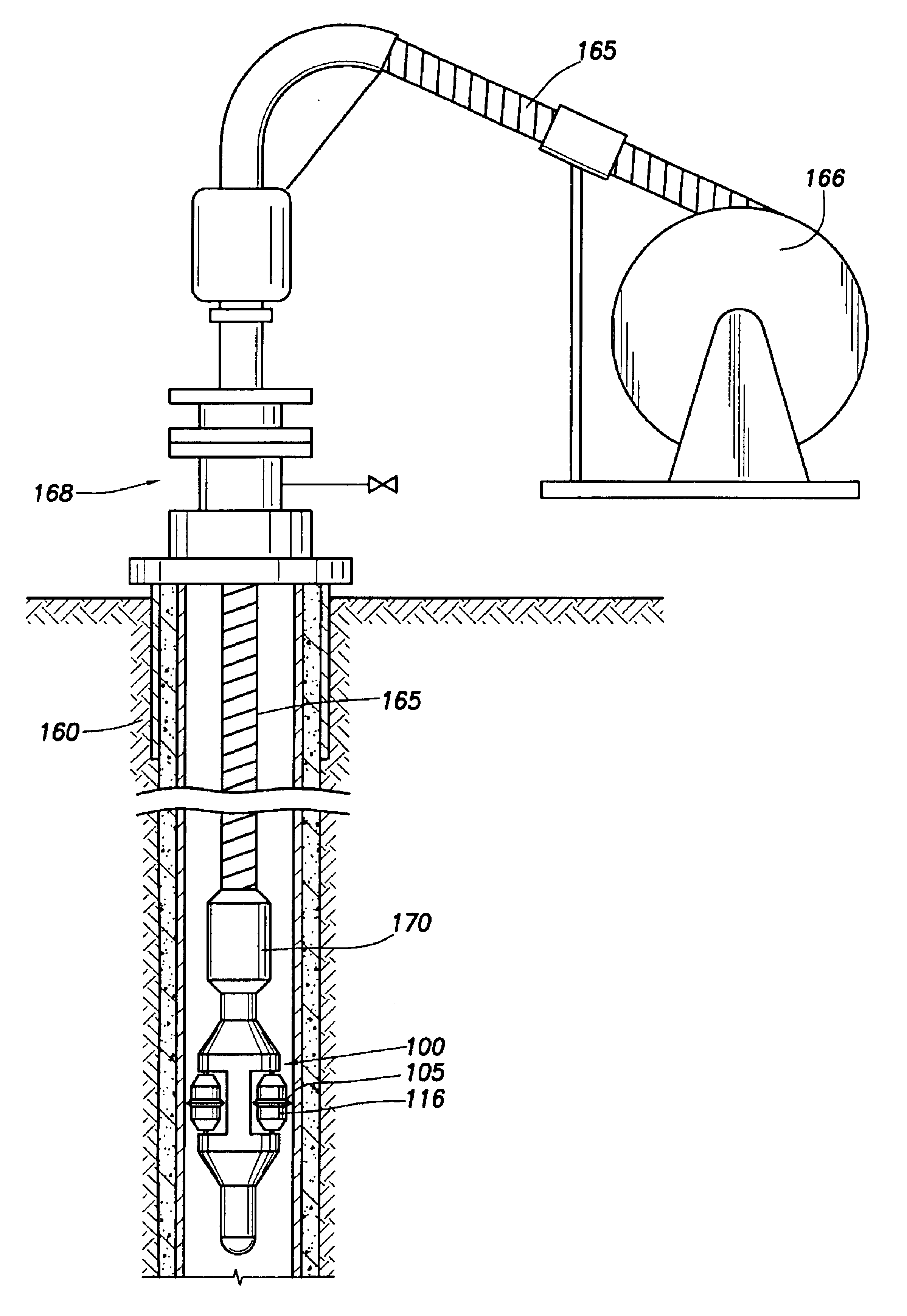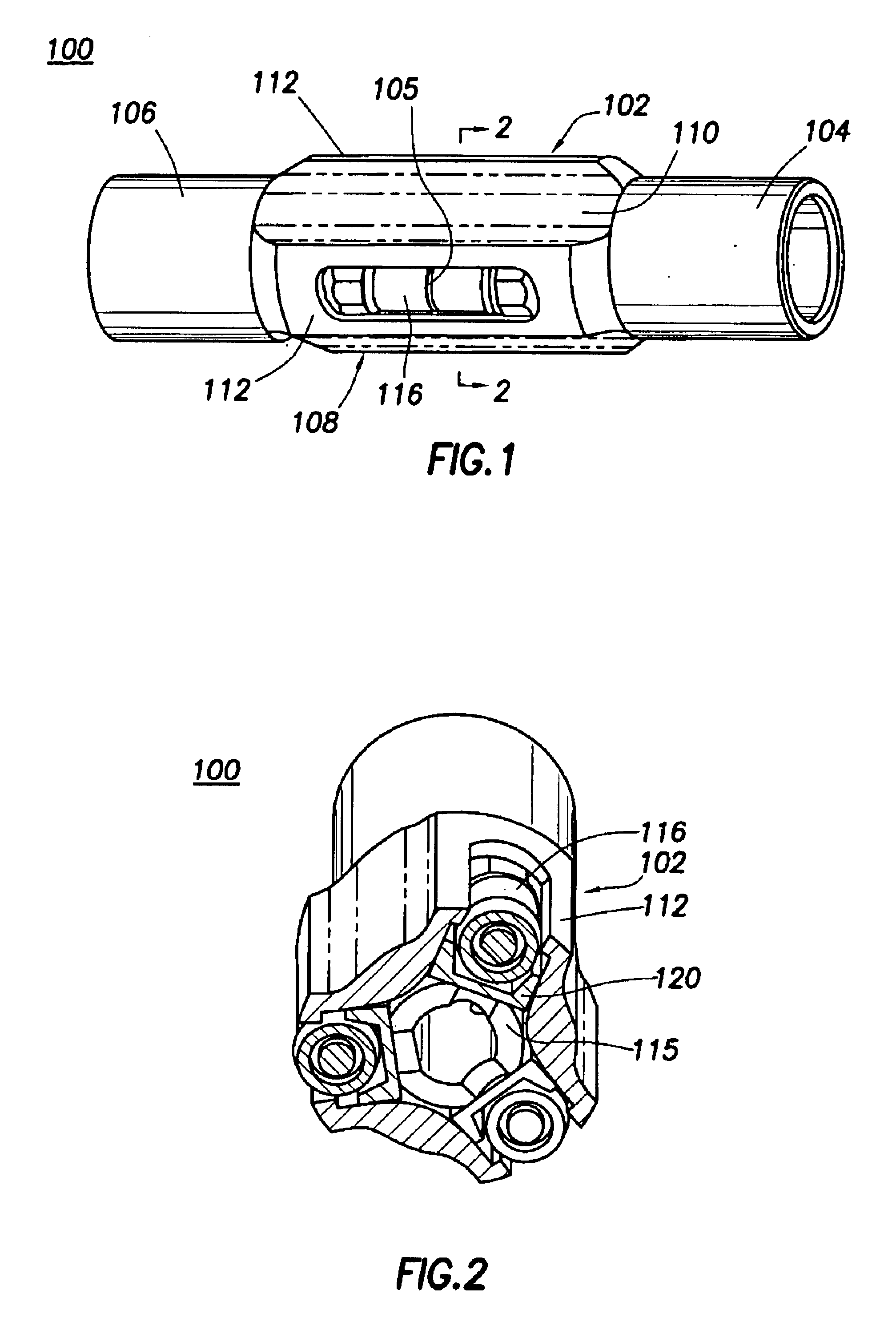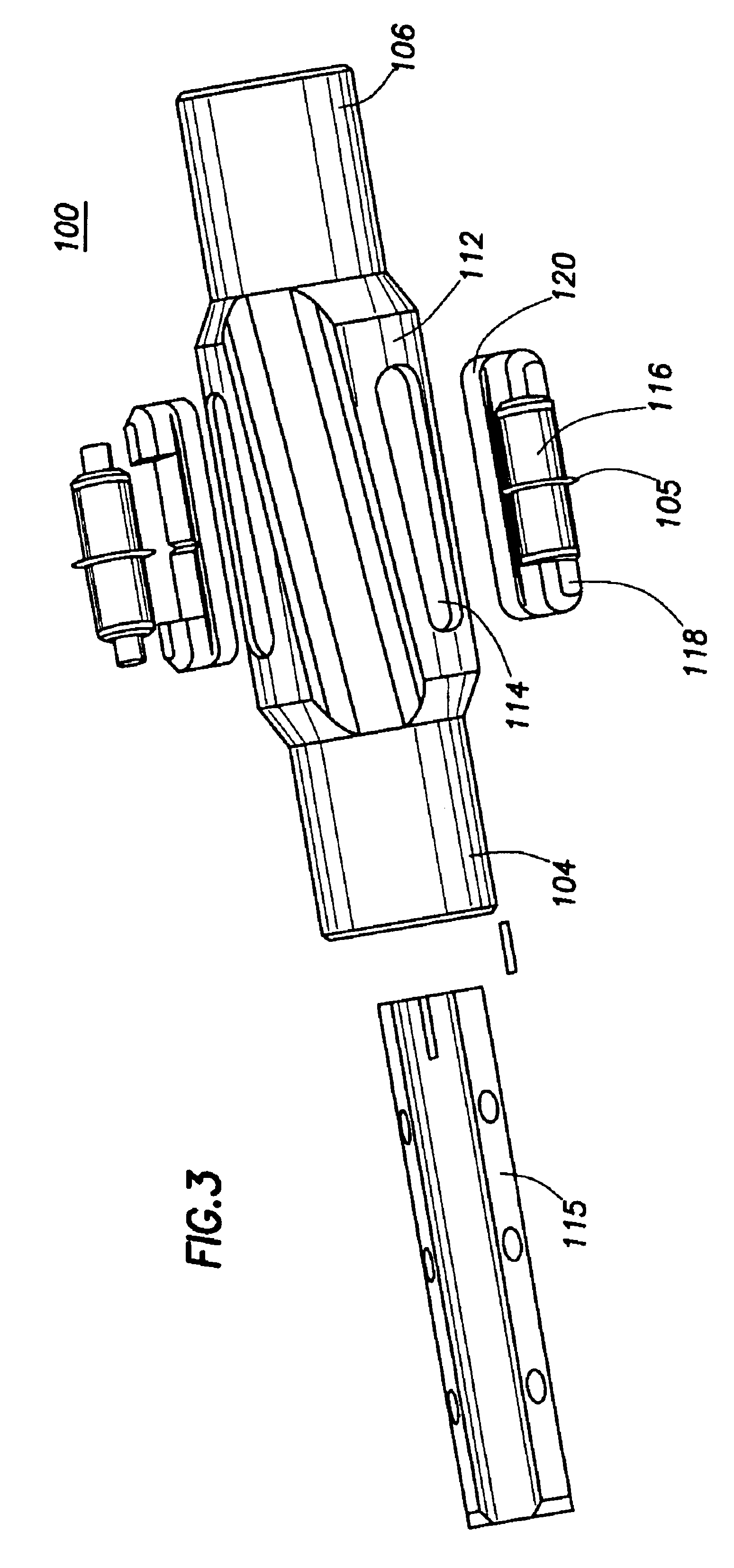Apparatus and methods for separating and joining tubulars in a wellbore
- Summary
- Abstract
- Description
- Claims
- Application Information
AI Technical Summary
Benefits of technology
Problems solved by technology
Method used
Image
Examples
Embodiment Construction
FIGS. 1 and 2 are perspective views of the cutting tool 100 of the present invention. FIG. 3 is an exploded view thereof. The tool 100 has a body 102 which is hollow and generally tubular with conventional screw-threaded end connectors 104 and 106 for connection to other components (not shown) of a downhole assembly. The end connectors 104 and 106 are of a reduced diameter (compared to the outside diameter of the longitudinally central body part 108 of the tool 100), and together with three longitudinal flutes 110 on the central body part 108, allow the passage of fluids between the outside of the tool 100 and the interior of a tubular therearound (not shown). The central body part 108 has three lands 112 defined between the three flutes 110, each land 112 being formed with a respective recess 114 to hold a respective roller 116. Each of the recesses 114 has parallel sides and extends radially from the radially perforated tubular core 115 of the tool 100 to the exterior of the respe...
PUM
 Login to View More
Login to View More Abstract
Description
Claims
Application Information
 Login to View More
Login to View More - R&D
- Intellectual Property
- Life Sciences
- Materials
- Tech Scout
- Unparalleled Data Quality
- Higher Quality Content
- 60% Fewer Hallucinations
Browse by: Latest US Patents, China's latest patents, Technical Efficacy Thesaurus, Application Domain, Technology Topic, Popular Technical Reports.
© 2025 PatSnap. All rights reserved.Legal|Privacy policy|Modern Slavery Act Transparency Statement|Sitemap|About US| Contact US: help@patsnap.com



